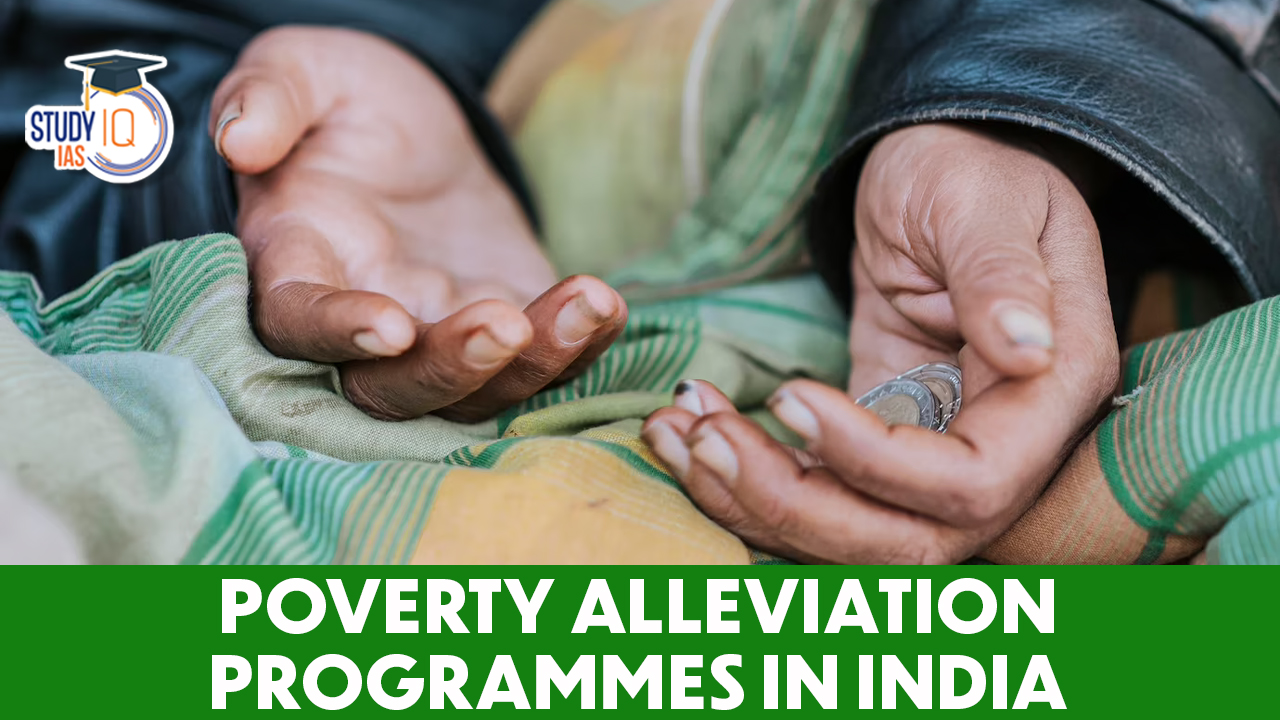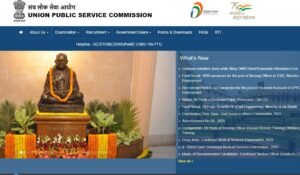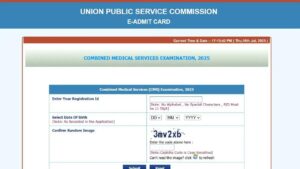Table of Contents
Poverty Alleviation Programmes in India: The Poverty Alleviation Programmes in India aim to reduce the prevalence of poverty in the country by providing enough access to food, financial aid, and basic necessities to families and households that fall below the poverty line. There are many facets to poverty, but it is undeniably a lack of wellbeing. Poverty is exemplified by low wages and the inability to obtain the essential goods and services needed for human subsistence. Low levels of education and health, restricted access to sanitary facilities, lack of speech, a lack of finances, inadequate physical security, and opportunities to improve one’s status are all made possible by the Indian government’s poverty alleviation programmes.
India’s initiatives aim to alleviate poverty The Indian economy syllabus for the IAS exam must be studied using the UPSC notes. You can discover all the government’s programmes for eradicating poverty in the sections that follow this page.
Poverty Alleviation Programmes in India
Poverty Alleviation Programmes are the kinds of initiatives that a government launches to end the country’s ongoing poverty. A nation’s poverty alleviation programmes can be divided into two categories: those that are targeted towards rural residents or areas, and those that are directed towards urban residents or places.
However, the majority of the government-initiated programmes and projects are created with the rural sector of society in mind. This is due to the fact that rural areas have a considerably higher frequency of poverty than metropolitan ones. Find out what makes urban and rural places different here.
Poverty and Poverty Alleviation Programmes Meaning
Poverty is defined as the lack of the means and necessities necessary to maintain a basic quality of existence. A person is considered to be living in poverty when his or her earnings are insufficient to pay for the necessities of life. The World Bank defines poverty as a substantial loss of wellbeing that can take many different forms. Low salaries and a lack of access to the commodities and services required for a reasonable standard of living are two characteristics that define poverty.
Poverty alleviation refers to a collection of social and economic initiatives taken to eradicate poverty in a society. Extreme poverty is defined by the World Bank as having a daily income of less than $1.90, which affects more than 760 million people worldwide. In 2011, almost 268 million Indians made it on less than $1.90. The Indian government has developed a number of plans, projects, and schemes under various poverty alleviation programmes in India in order to eradicate poverty and provide disadvantaged households with access to the basic necessities.
Poverty Alleviation Programmes launched by Indian Government
Numerous schemes for reducing poverty have been implemented in India since 1978, helping the less fortunate members of society raise their level of living through a variety of techniques. The table below lists all of the government of India’s initiatives to reduce poverty, along with the year they were introduced and their goals.
| Name | Year
Launched |
Objectives of Poverty Alleviation Programmes |
| Integrated Rural Development Program | 1978 | · The Community Area Development Programmes, Drought Prone Area Programme, Small Farmer Development Agency, and Marginal Farmers And Agricultural Labourer Agency are all combined under the Integrated Rural Development Programme.
· The main goal of implementing integrated rural development programmes was to solve the issues of hunger, unemployment, and poverty in rural India. |
| Pradhanmantri Gramin Aawas Yojana | 1985 | · To provide housing for everyone and to construct 13 lakh residential areas in rural areas;
· To provide loans to the general population at acceptable discounts. By providing both annual guaranteed pay employment and on-demand employment, this poverty reduction project seeks to enhance the amount of wage job opportunities that households have accessible to them. |
| Indira Gandhi National Old Age Pension Scheme | 1995 | · To provide pensions for elderly Indians who are 65 years of age or older and living in poverty.
· This programme provided a minimum monthly payment of 200 rupees for those between the ages of 60 and 79 and 500 rupees for those above the age of 80. |
| National Family Benefit Scheme | 1995 | · To provide 20,000 to the person who would become the family’s leader once the lone career dies. |
| Jawahar Gram Samridhi Yojana | 1999 | Providing a stable income to BPL families through upgrading the amenities offered to rural communities, such as good schools, connecting rural and urban highways, and opening hospitals. |
| Annapurna Yojana | 1999 to 2000 | This programme to combat poverty offers elderly people who fit the criteria but are not currently registered in the national old age pension scheme food grains weighing around 10 kg. |
| Food for Work Program | 2000 | The Food Corporation of India gave the states free food grains, but over time, the supply grew erratic and slow. |
| Sampurn Gramin Rojgar Yojana | 2003 | The main objectives of this game were to provide food and nutritional stability for the underprivileged sector of society, promote wage jobs and a long-lasting economic framework in rural areas. |
| Mahatma Gandhi National Rural Employment Guarantee Act | 2005 | · This act guarantees 100 days of employment per year for every rural family. Only one third of the posts are expected to be filled by women. Under this act, the Union government will also contribute cash for the National Employment Guarantee.
· In order to implement the programme, state governments will also establish new Employment Guarantee funds. If a participant in the programme is not offered employment within 15 days, they are eligible for a daily employment benefit. |
| National Food Security Mission | 2007 | Through responsible area development and increased productivity, the countries’ designated districts will be able to produce more wheat, rice, pulses, and coarse grains. |
| National rural livelihood mission | 2011 | It emerges from the need to provide the poor in rural areas with employment that pays a reliable monthly payment and to diversify their needs. At the local level, self-help groups are developed to support the underprivileged area. |
| National Urban livelihood Mission | 2013 | It focuses on bringing together the urban poor into self-help organisations, offering opportunities for skill development that lead to market-based employment, and helping people launch their own businesses by making funding easily accessible. |
| Pradhanmantri Jan Dhan Yojana | 2014 | Aiming to directly transfer pension, subsidy, insurance, and other benefits into 1.5 crore bank accounts, this is under the anti-poverty initiatives. The poor segment of society is the intended audience for such benefits. |
| Pradhanmantri Kaushal Vikas Yojana | 2015 | This programme focuses on those who have recently entered the job force, in particular class tenth and twelfth dropouts, and employment exchange. |
| Sansad Aadarsh gram Yojana | 2014 | By the end of 2019, establish the institutional framework and infrastructure needed in three communities. |
| Pradhanmantri Jivan Jyoti Bima Yojana | 2015 | The initiative provides low-income and underprivileged sections in society with life insurance. |
| Pradhanmantri Suraksha Bima Yojana | 2015 | Under this programme, those from socially and economically disadvantaged groups are given access to life insurance policies. |
| National Maternity Benefits Scheme | 2016 | · This programme assures that mothers of children who are 19 years of age or older will receive financial support by giving them 6000 rupees.
· This financial aid is accessible for roughly 12 to 8 weeks prior to the child’s birth and is still accessible even after the child has passed away. |
| Pradhanmantri Ujjwala Yojana | 2016 | This programme guarantees the 50 million families from disadvantaged groups access to LPG connections. |
| Pradhanmantri Garib Kalyan Yojana | 2016 | · By paying a charge equal to 50% of the undisclosed revenue, this strategy provides the opportunity to clumsily disclose unexplained dark money while avoiding prosecution.
· The UN correspondent contributes an additional 25% of their income to the programme, which is eligible for a four-year interest-free return. |
| Solar Charkha Mission | 2018 | One of India’s plans to combat poverty ensures the establishment of Solar Charkha clusters in developed areas of the country by giving about 1 lakh people jobs. |
| National Nutrition Mission (Poshan Abhiyan) | 2018 | This programme aims to better children’s nutritional status nationwide and reduce undernutrition rates. Additionally, it benefits young children, breastfeeding mothers, and pregnant and parenting adolescents. |
| Pradhan Mantri Shram Yogi Maan Dhan | 2019 | An initiative for the complete assurance of unorganised employees’ social security and safety in old age was initiated by the central government. |
| Prime Minister Street Vendors Atmnirbhar Nidhi PM SVanidhi | 2020 | This programme provides microcredit opportunities to street vendors who have been affected by the Covid 19 outbreak. |
Poverty Alleviation Programmes in India UPSC
Only until the impoverished start to actively participate in and contribute to the growing process will poverty be successfully erased. This is achieved through a process of social mobilisation that empowers and encourages disadvantaged people to participate. Additionally, this will help to open up career prospects, which could lead to an improvement in income, skill development, health, and literacy. Additionally, infrastructure including schools, roads, power, telecom, IT services, and training facilities must be supplied in poverty-stricken communities.


 UPSC ESIC Nursing Officer Final Result 2...
UPSC ESIC Nursing Officer Final Result 2...
 UPSC CMS Admit Card 2025 Out: Download L...
UPSC CMS Admit Card 2025 Out: Download L...
 UPSC Study Material for Prelims & Ma...
UPSC Study Material for Prelims & Ma...





















